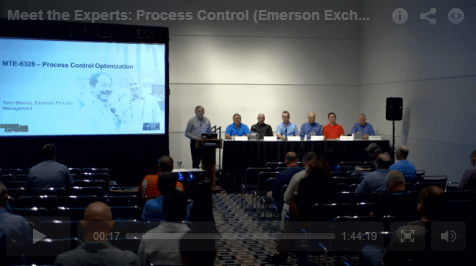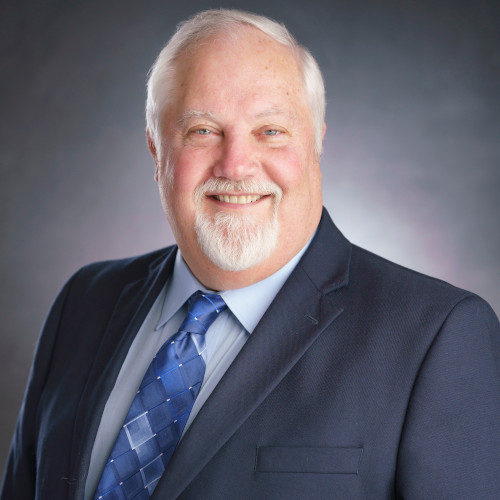One of the new things that we tried at last week’s Emerson Exchange conference in Denver was to have our Emerson Exchange 365 community members submit questions for a Meet the Experts session panel on process control and optimization.
The thread, questions and answers are at Virtual Q&A: Process Control >> REPLY to THIS POST w/ QUESTIONS. A video of the session is now available on this thread:
Emerson’s Lou Heavner was a panel member and added a great response to a community member’s question about the difference between DeltaV Predict and PredictPro, which are embedded model predictive control-based applications.
If you look at BOL [DeltaV Books Online], the examples for Predict are as replacements for advanced regulatory controls where feed-forward or override control are required, but no specific requirement for optimization. This is still the best kind of application for Predict. It can be difficult to properly design and implement a multivariable advanced regulatory solution, but it is quite straight-forward with Predict.
If no optimization is required, only the requirement for feed-forward and/or override, this is an effective choice. Similarly, where optimization is not required, but the process dynamics include a dead-time dominant response, Predict is a good choice.
One example that worked well for me was a level control in a hopper. The hopper was fed granular material from multiple conveyors and the conveyed solids were mixed in a rotary tumbler. The conveyor speeds were used to control the level and the tumbler introduced a huge transport delay deadtime. In this case, tight level control was required to avoid bridging of solids in the hopper (high levels) and insufficient packing on the discharge conveyor (low levels). PID feedback could not be tuned to keep the level in bounds due to the dead-time dominant dynamics, but Predict worked very well.
Predict does allow you to “push” one variable, so an example like feed optimization might be a good candidate. Evaporators and dryers might be good examples where a small (in terms of MVs and CVs) problem with potentially significant dead-times and a desire to maximize feed up to some constraint limits are part of the control objective. Split-range control is another good advanced regulatory control strategy that can be effectively replaced with Predict. In the case where Predict (or PredictPro) output directly to the valve instead of a flow loop, you may want to consider using a characterizer to linearize the problem.
PredictPro is obviously required for problems with more than 4 MVs, CVs, DVs, or constraints, since it can handle up to 40 process inputs and 80 process outputs. It can handle loop interactions and dead-time dominant dynamics like Predict.
But where it really shines is applications that require constraint optimization. For many processes, different constraints will become active under different situations.
In the example I used during the session, the objective was to maximize feed to the LNG plant. But to liquefy the feed gas, heat had to be rejected to the environment (ambient air). As ambient temperature changed, the amount of heat that could be rejected and hence the amount of gas that could be fed also changed. There were limits on pressures and temperatures within the plant, especially around the discharge pressures and temperatures from the refrigeration compressors and in the refrigerant reservoirs. We configure 30 process outputs, of which only 2 or 3 were CVs, the rest being constraints and only 5 MVs.
According to Degrees of freedom theory, with 5 MVs, we could simultaneously push 5 constraint limits and as conditions changed, so did the constraints we were pushing. The other nice capability of PredictPro is the ability to have multiple control objectives.
For example, in the case of a distillation splitting propane and butane, one day propane may be more valuable and the next butane may be more valuable. It is possible to set up one objective to maximize propane recovery and another to maximize butane recovery. In a reactor, it may be desirable one day to run at high severity and another day it may be important just to maximize throughput.
The control objectives allow you to do this by maximizing or minimizing selected MVs and/or Process Outputs. And now MPC Plus allows us to go a step further with “adaptive” MPC by adjusting the penalty factors based on operating conditions without the need to go offline or perform a download.






